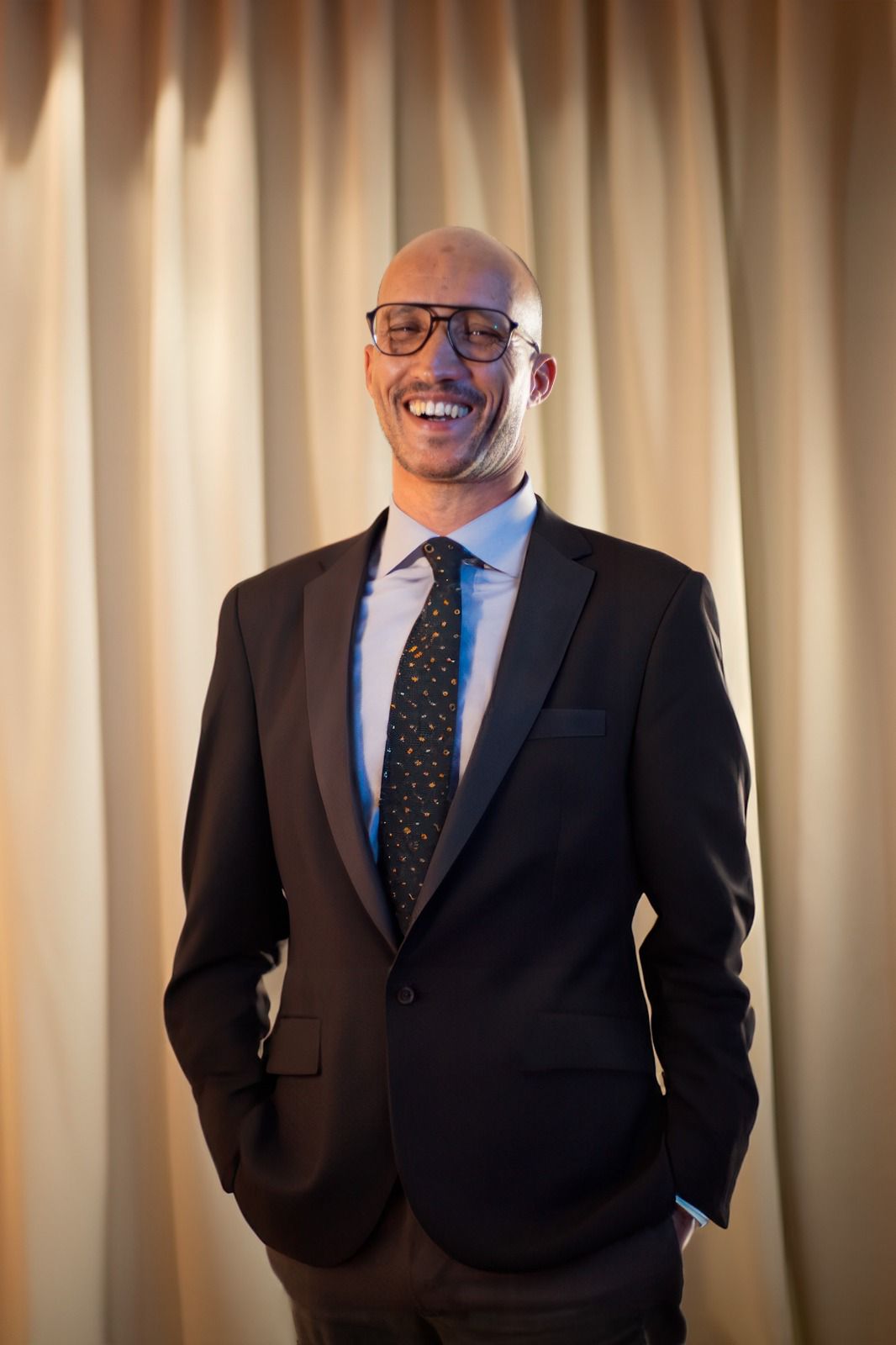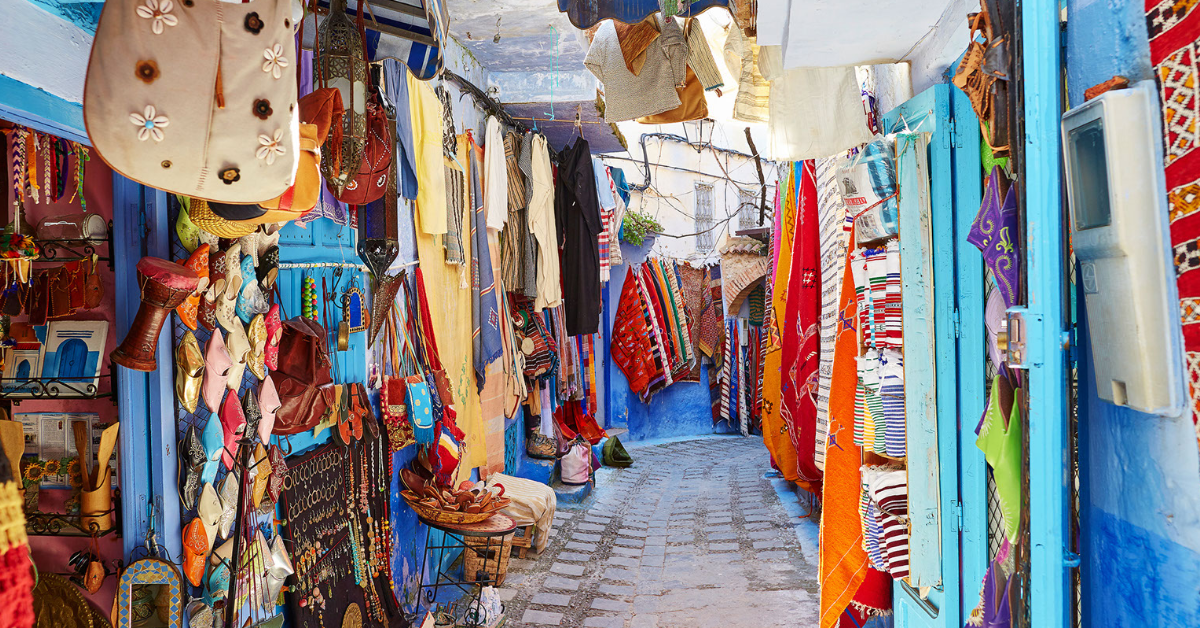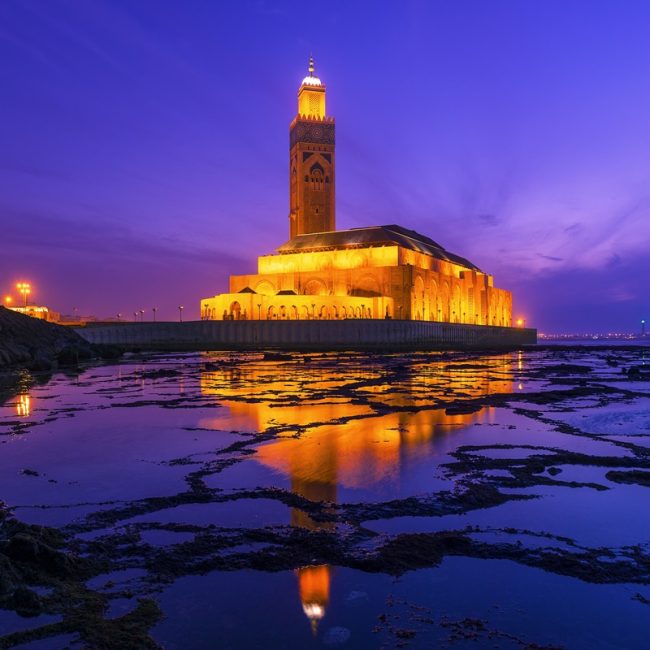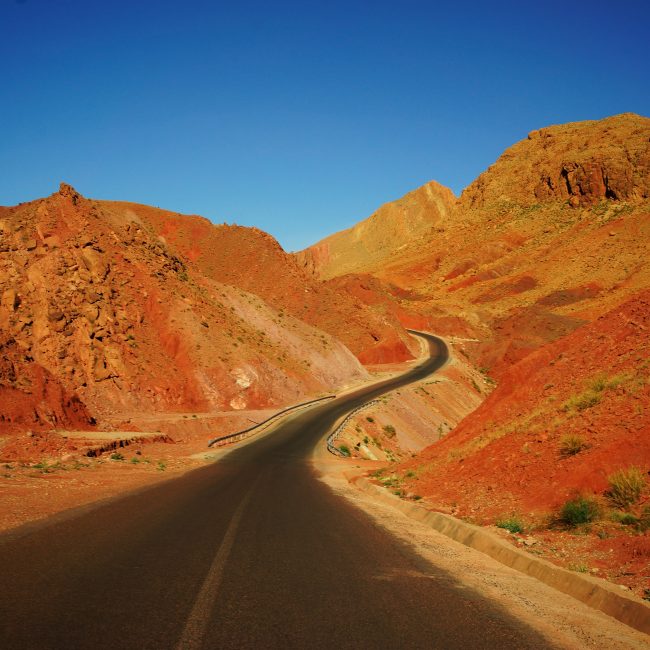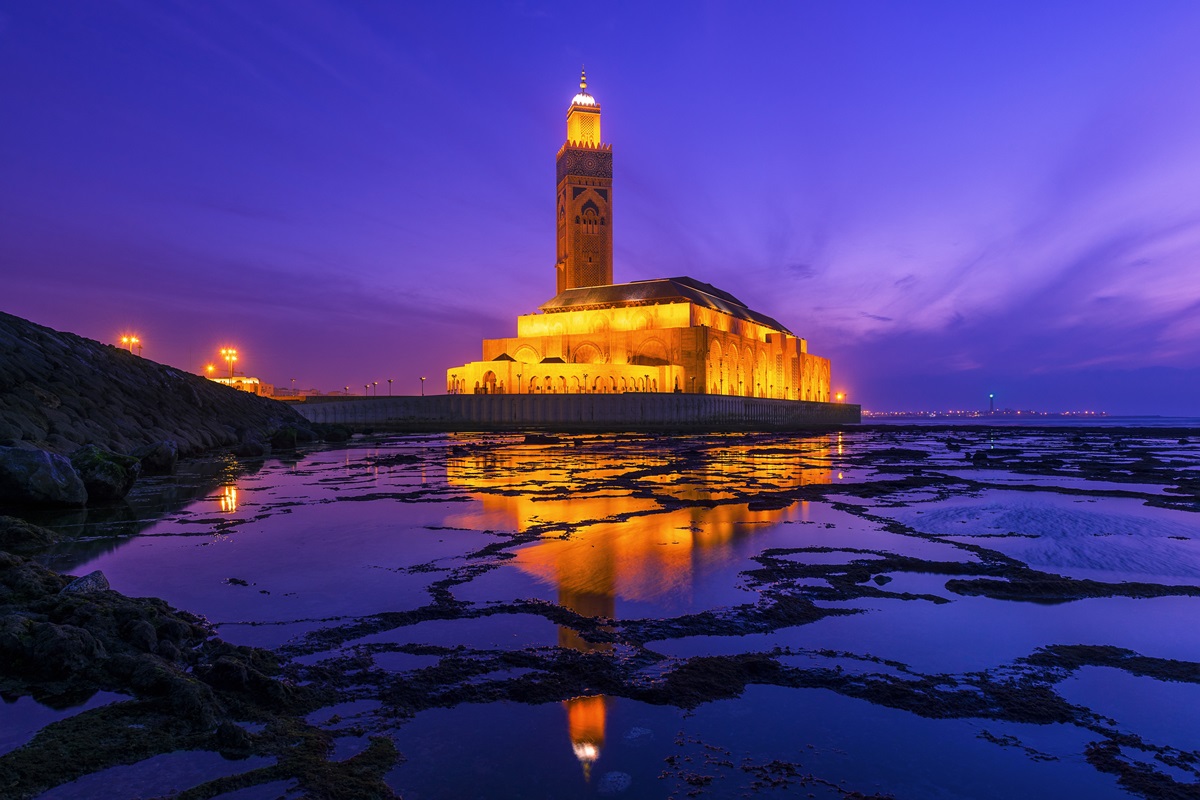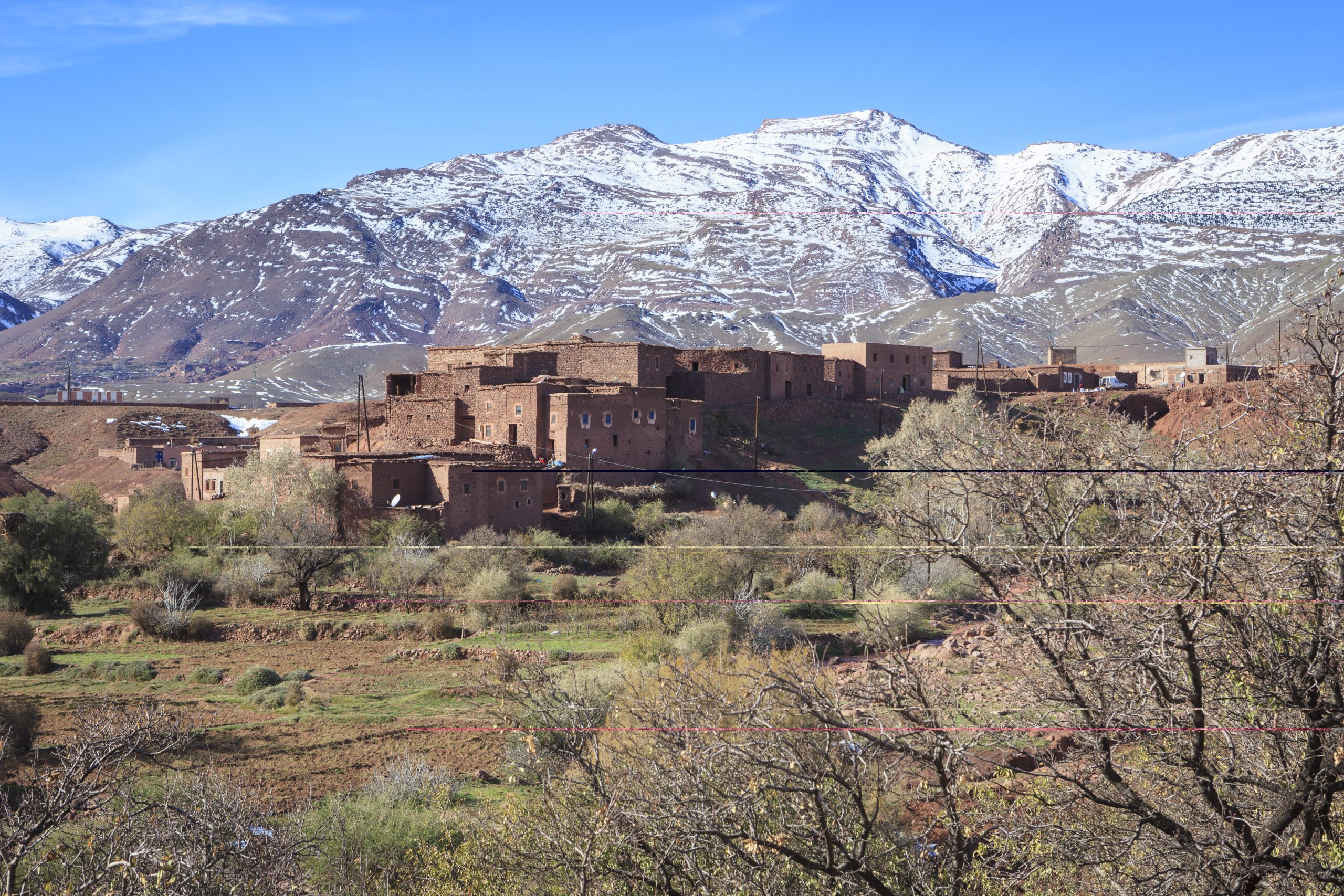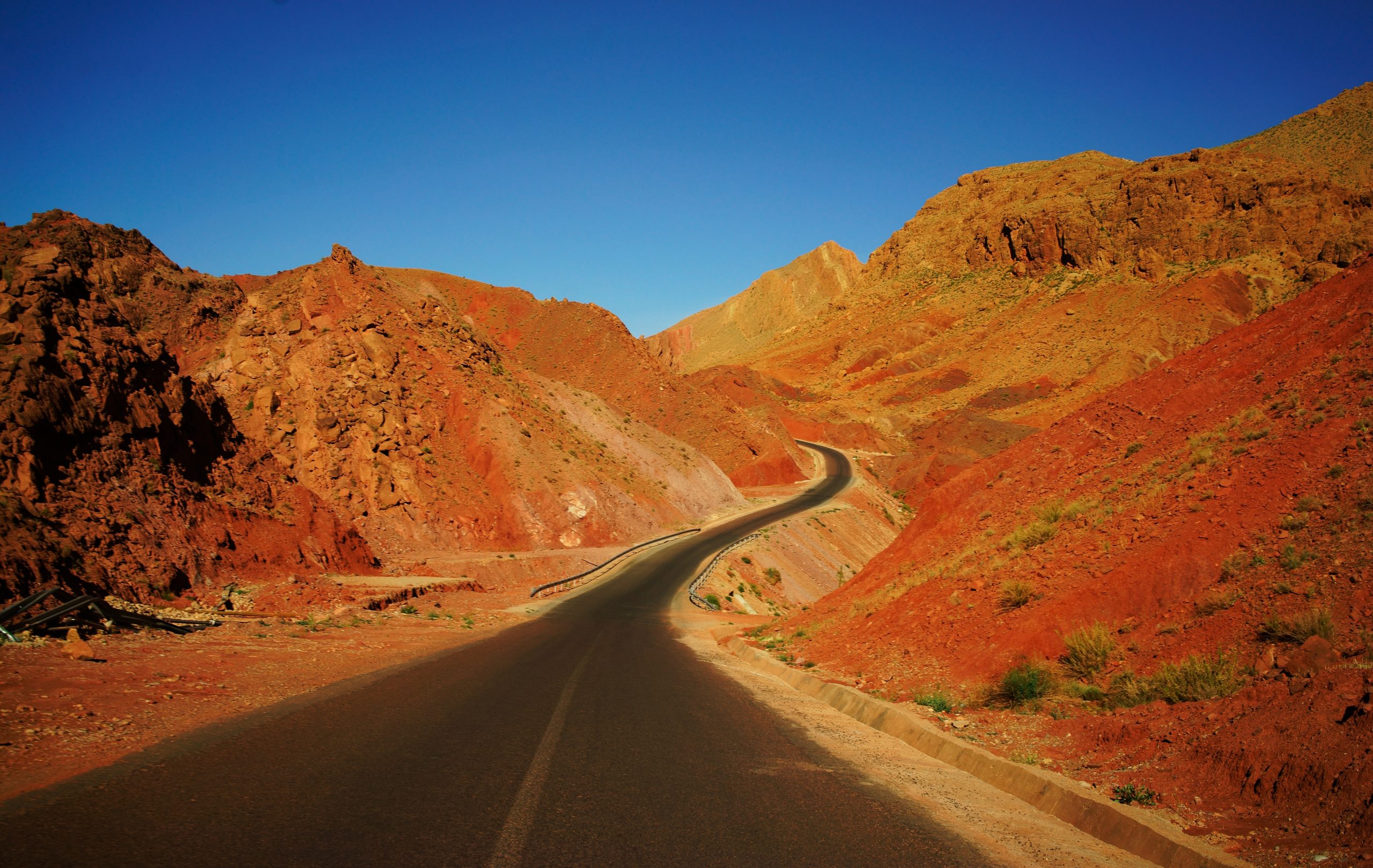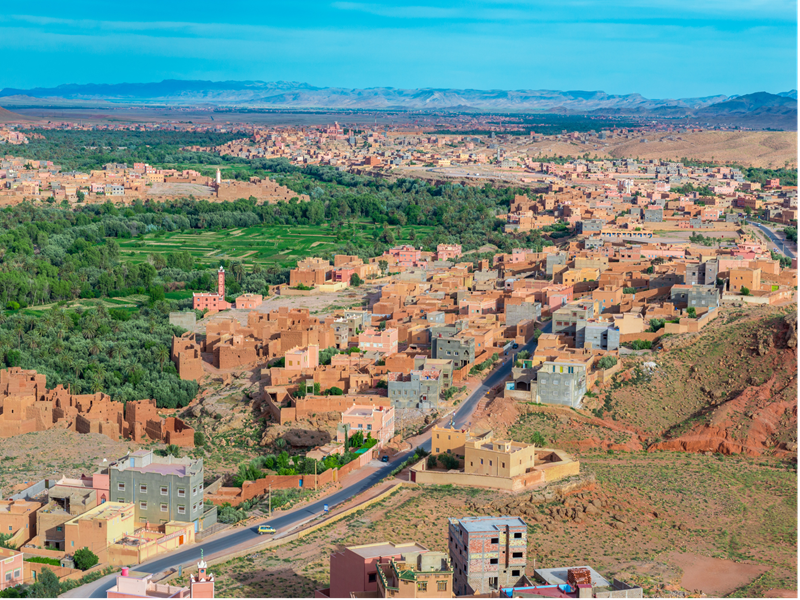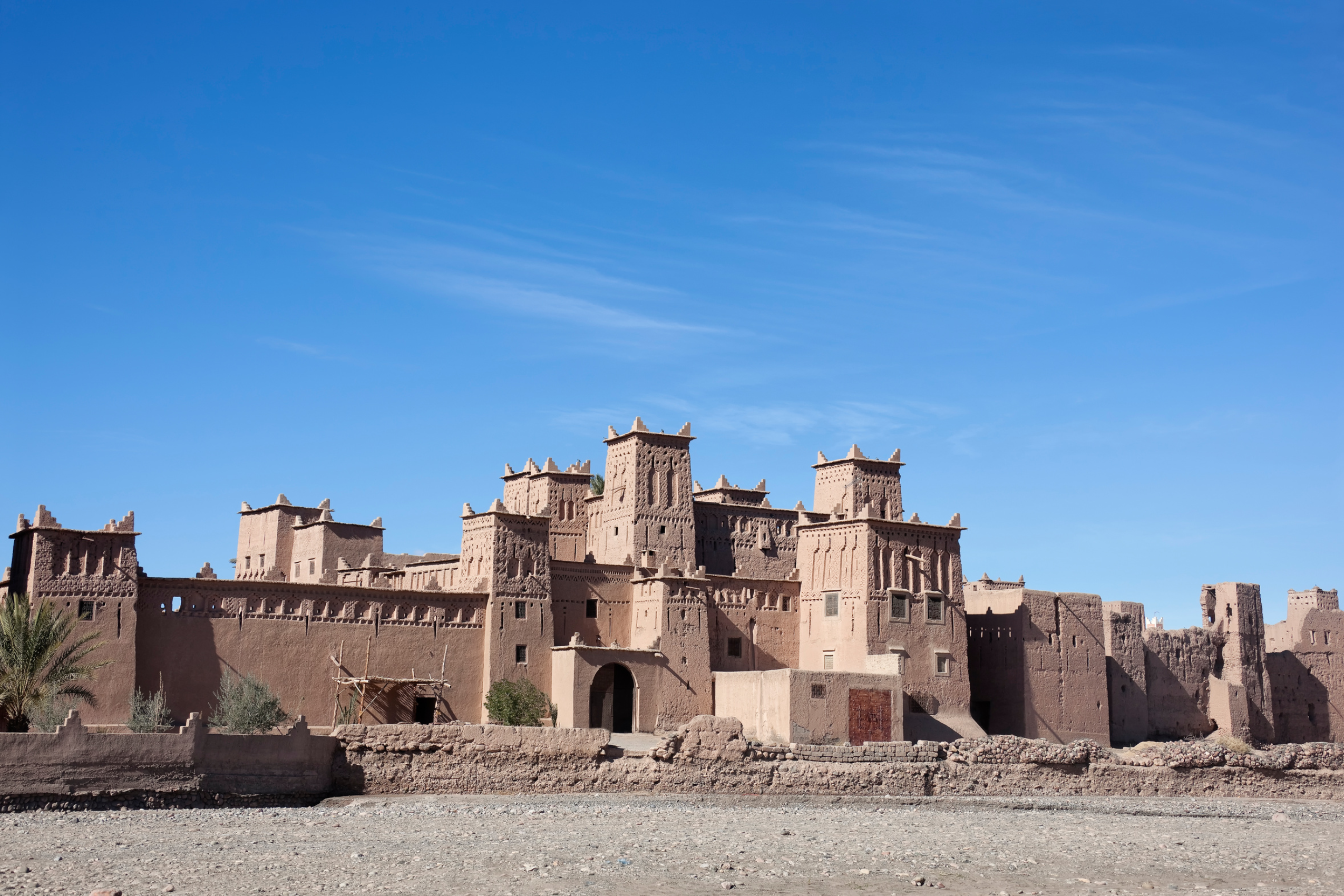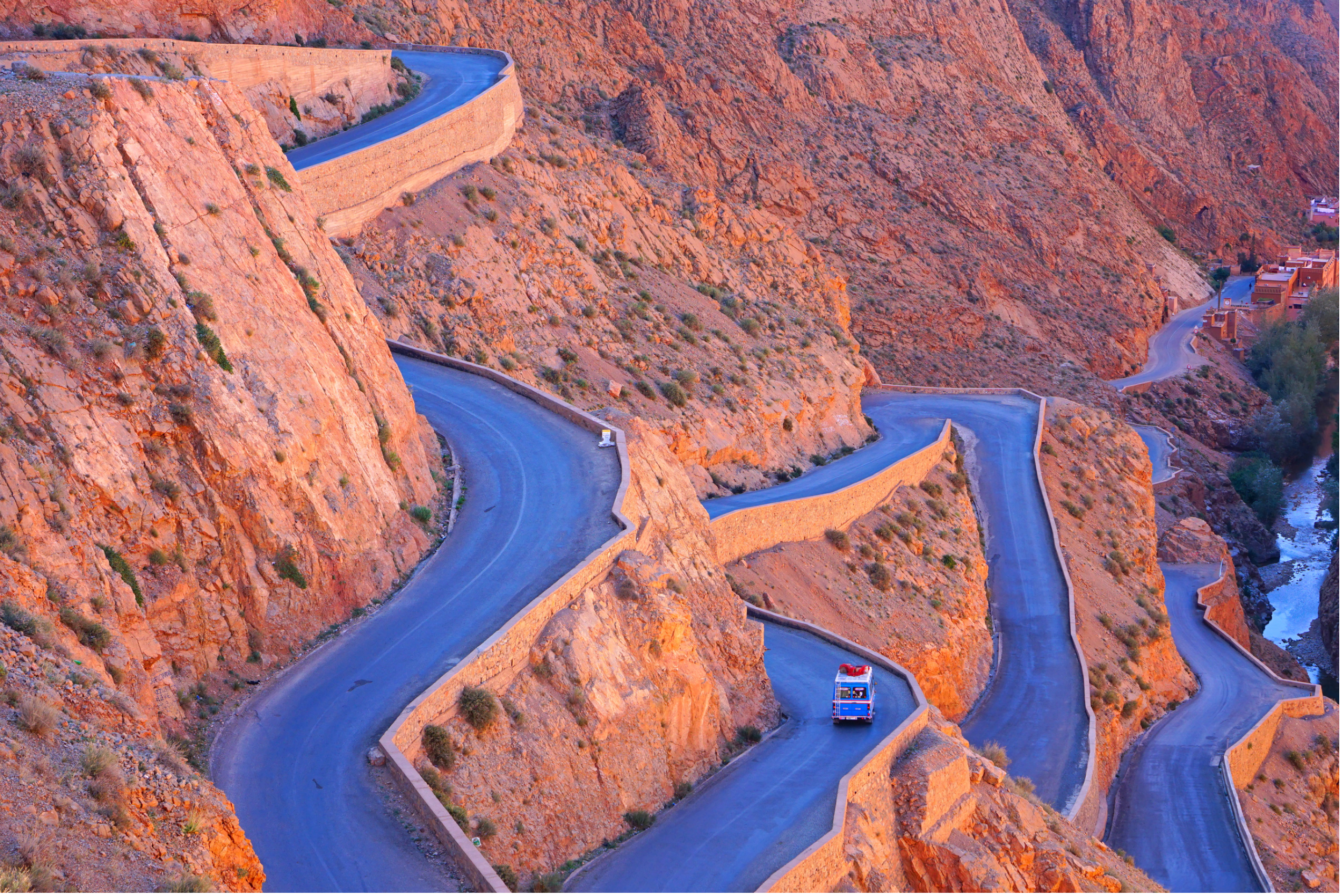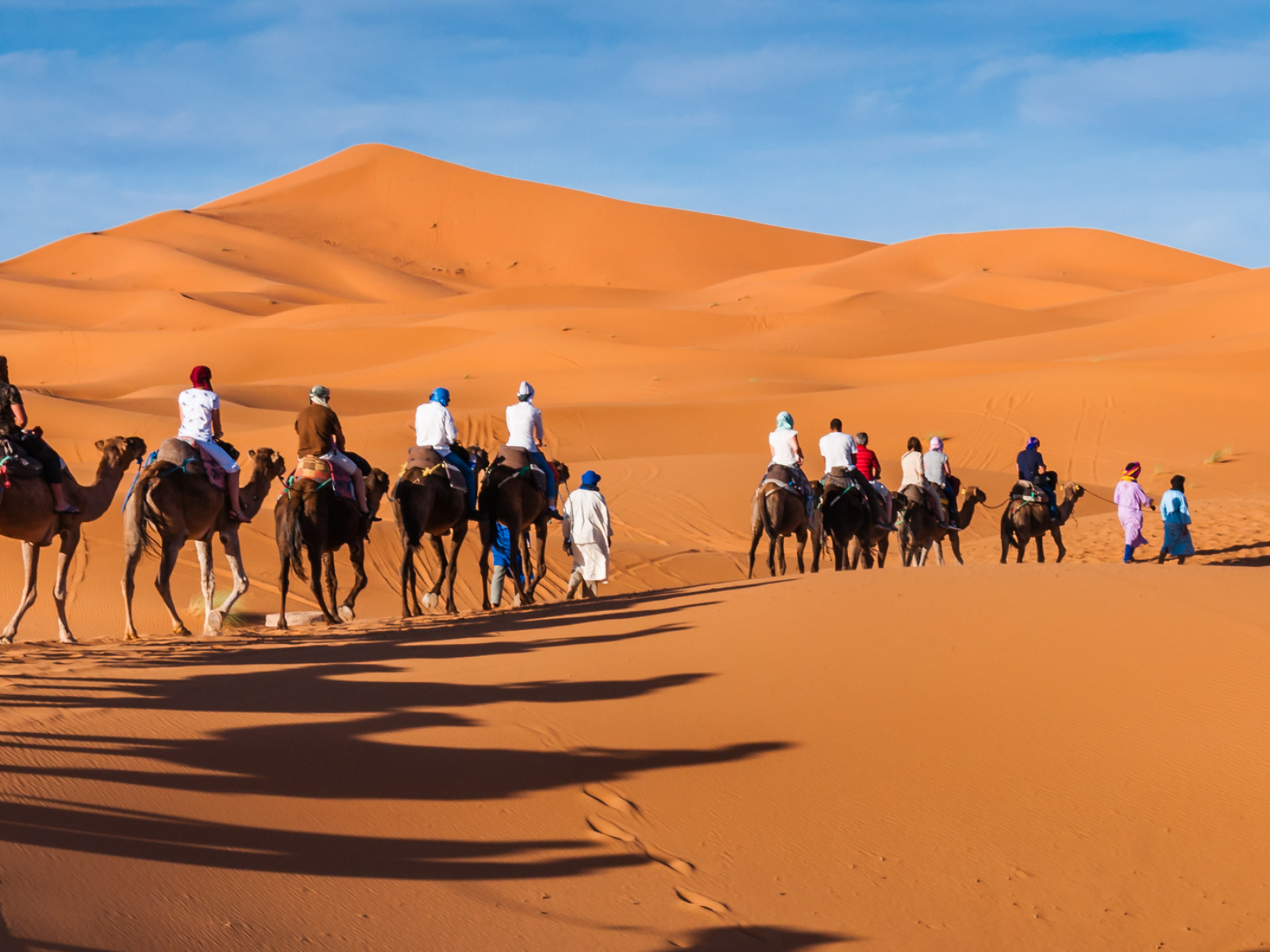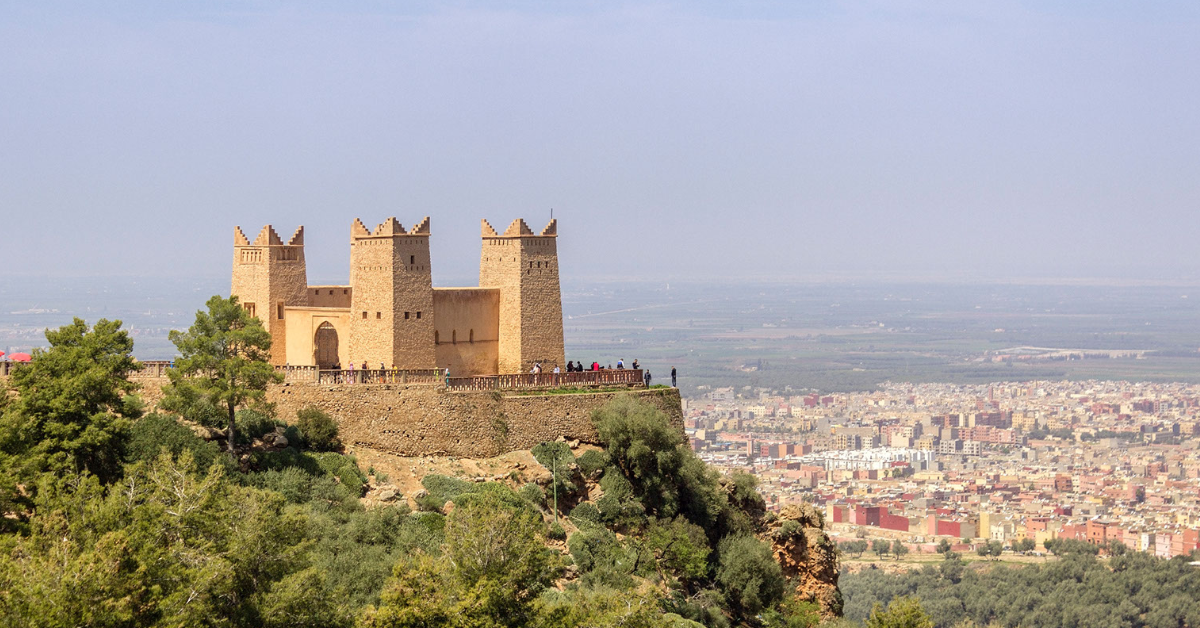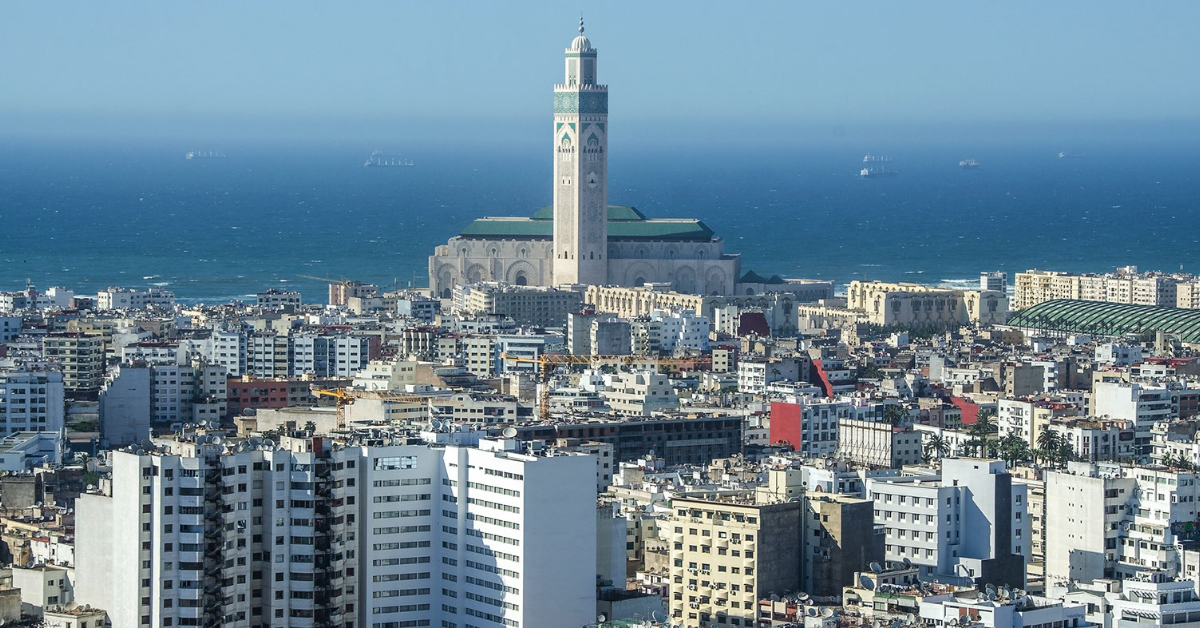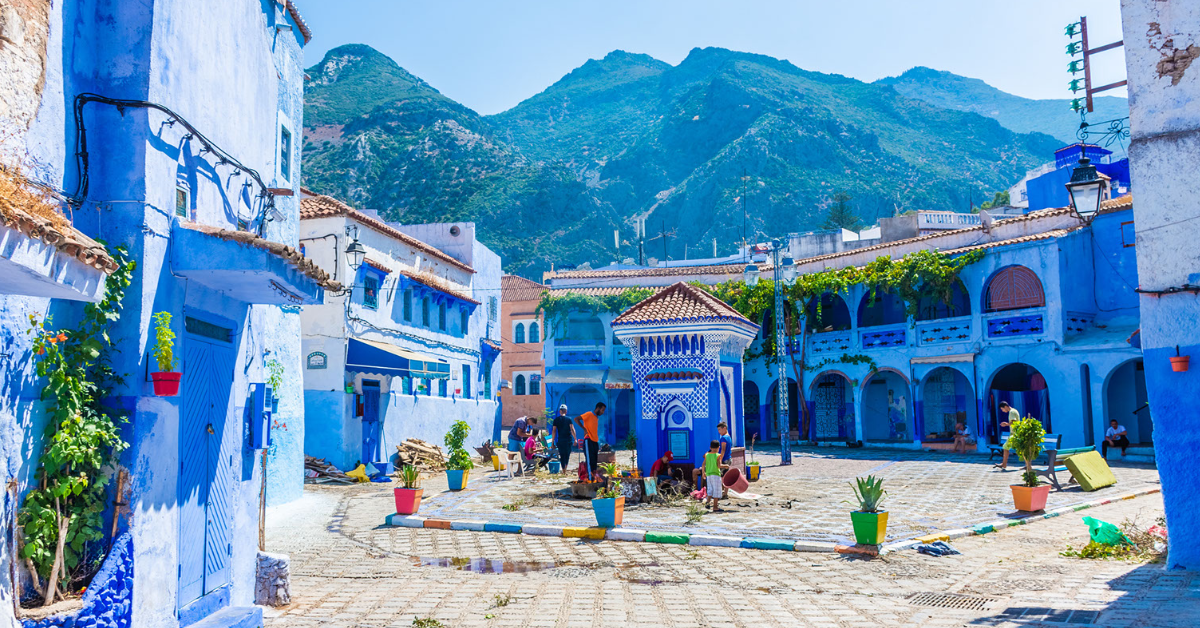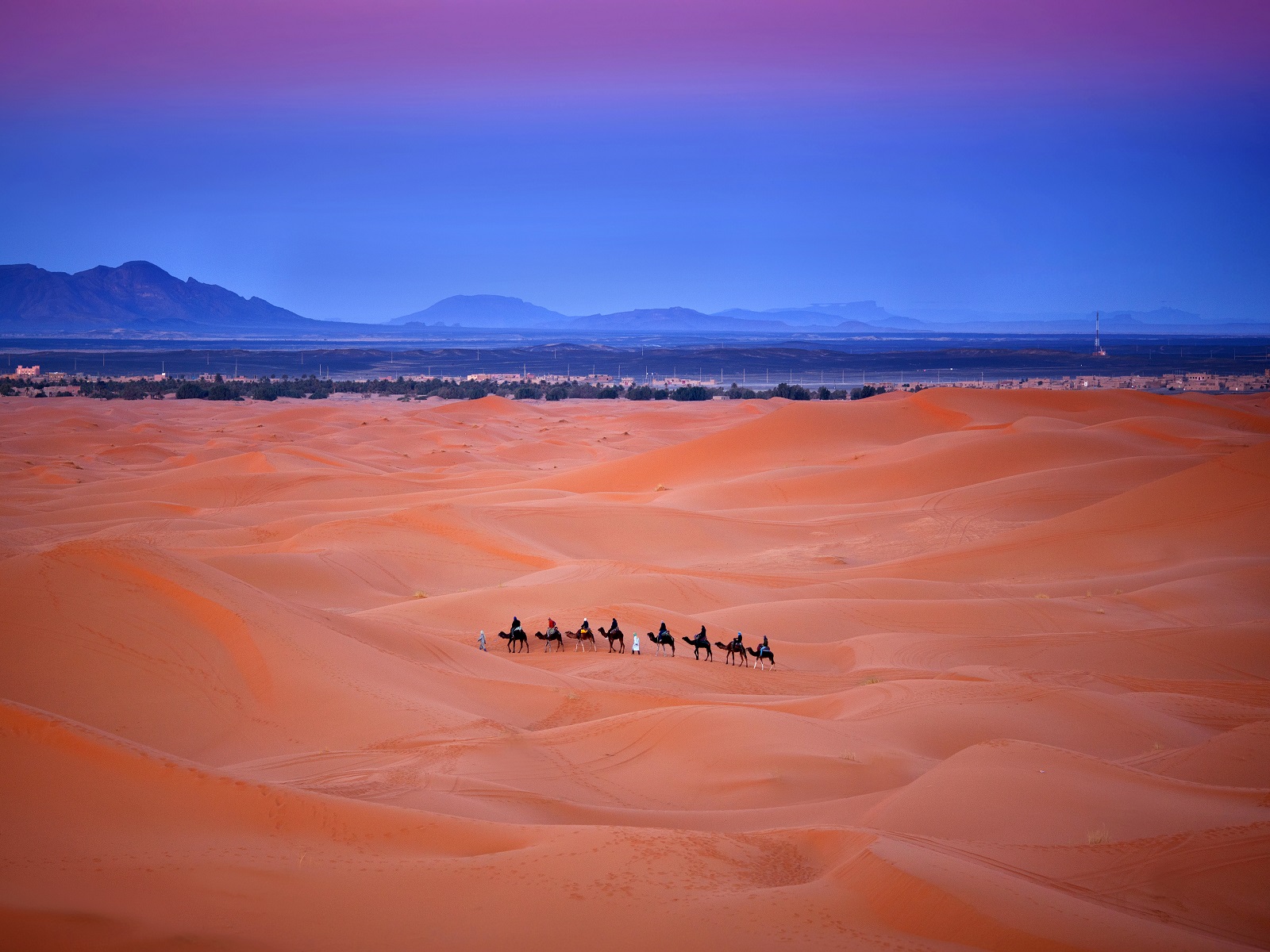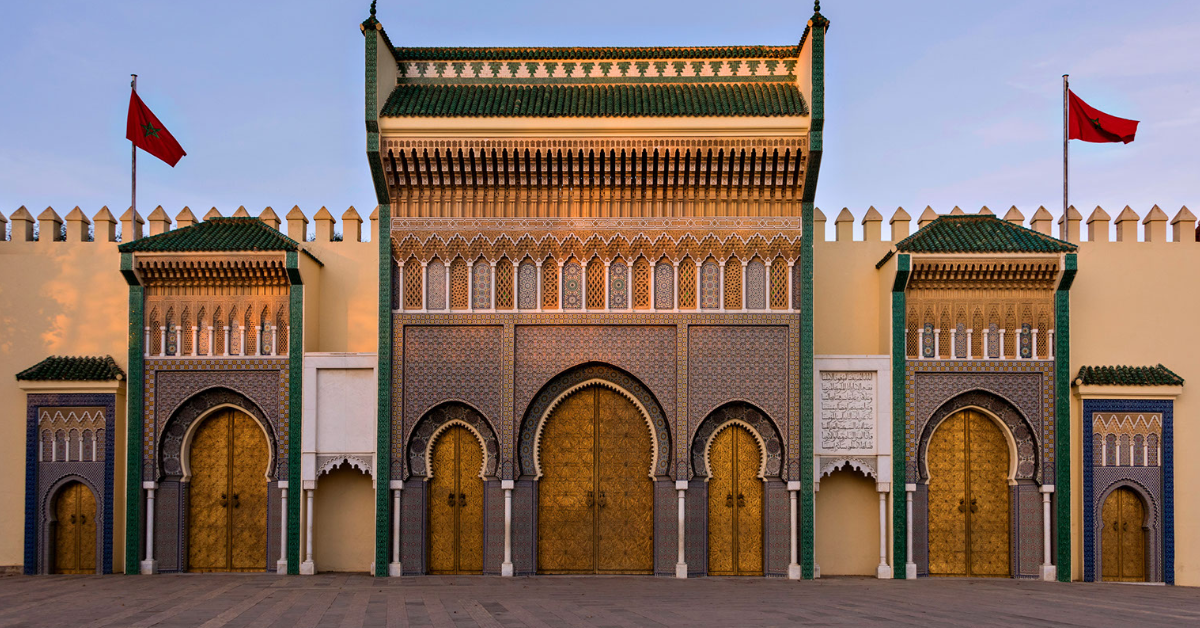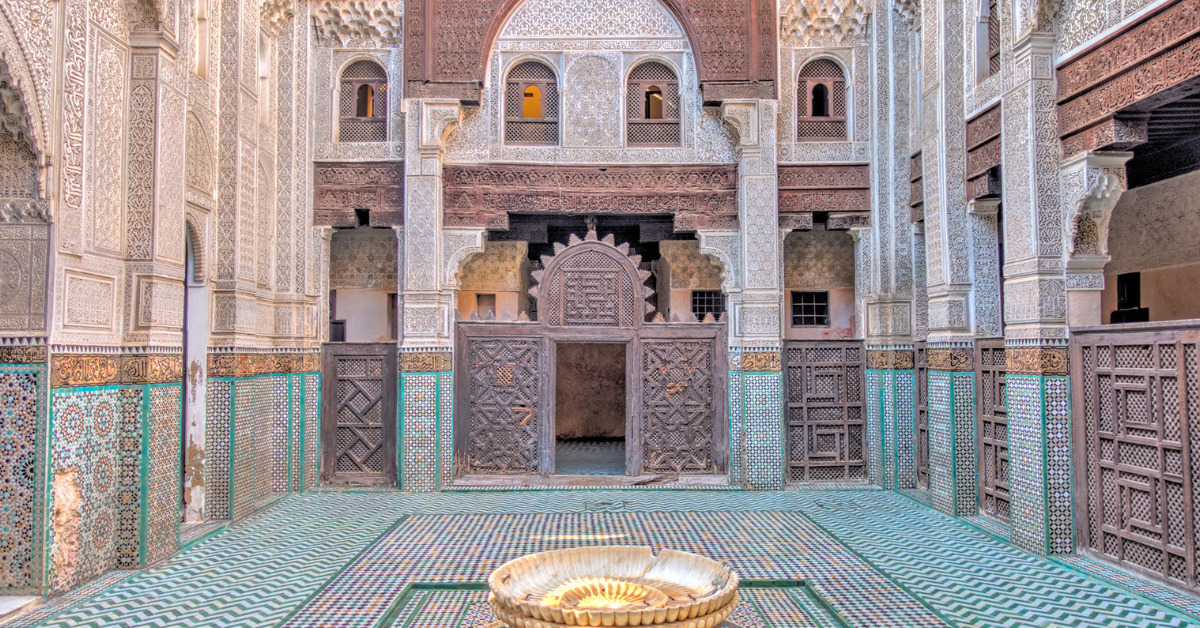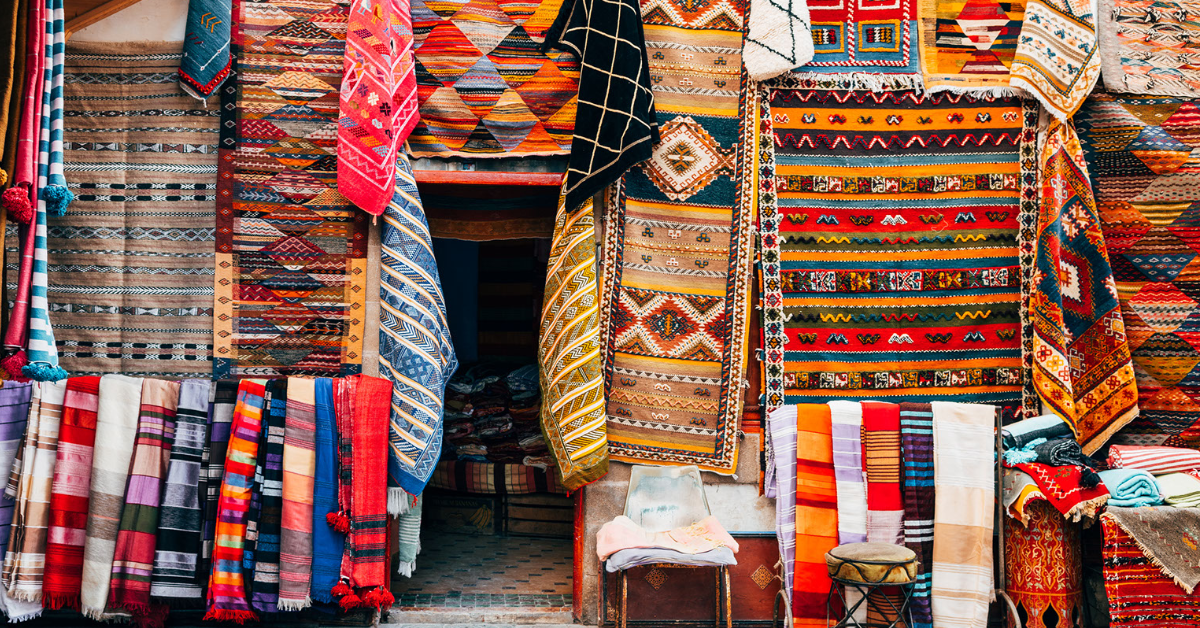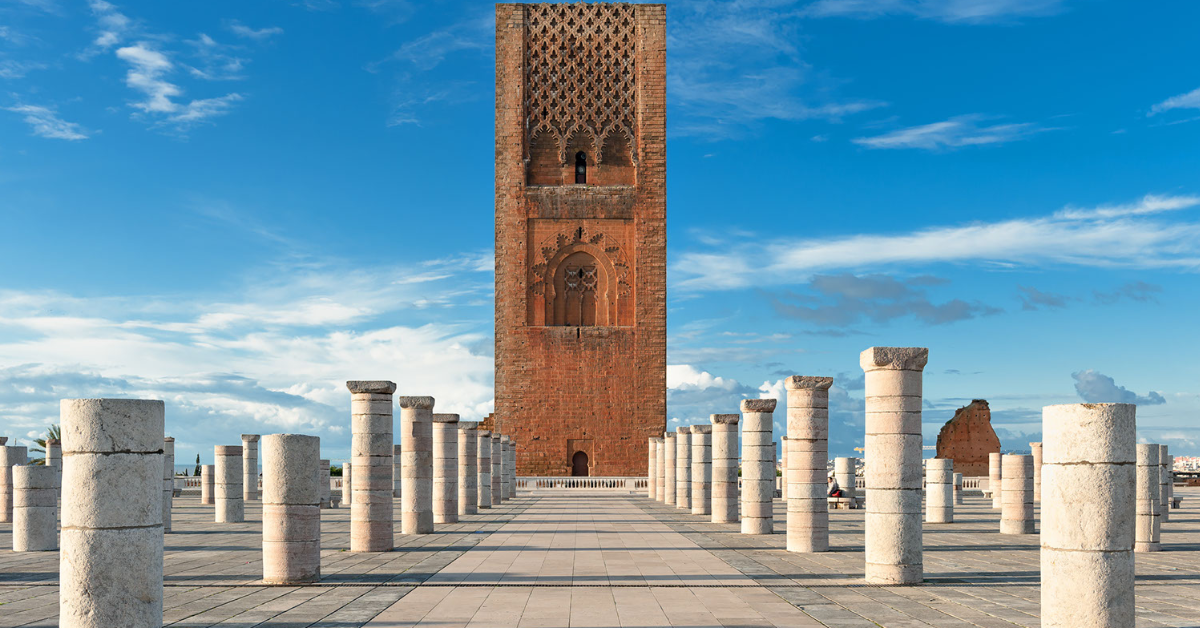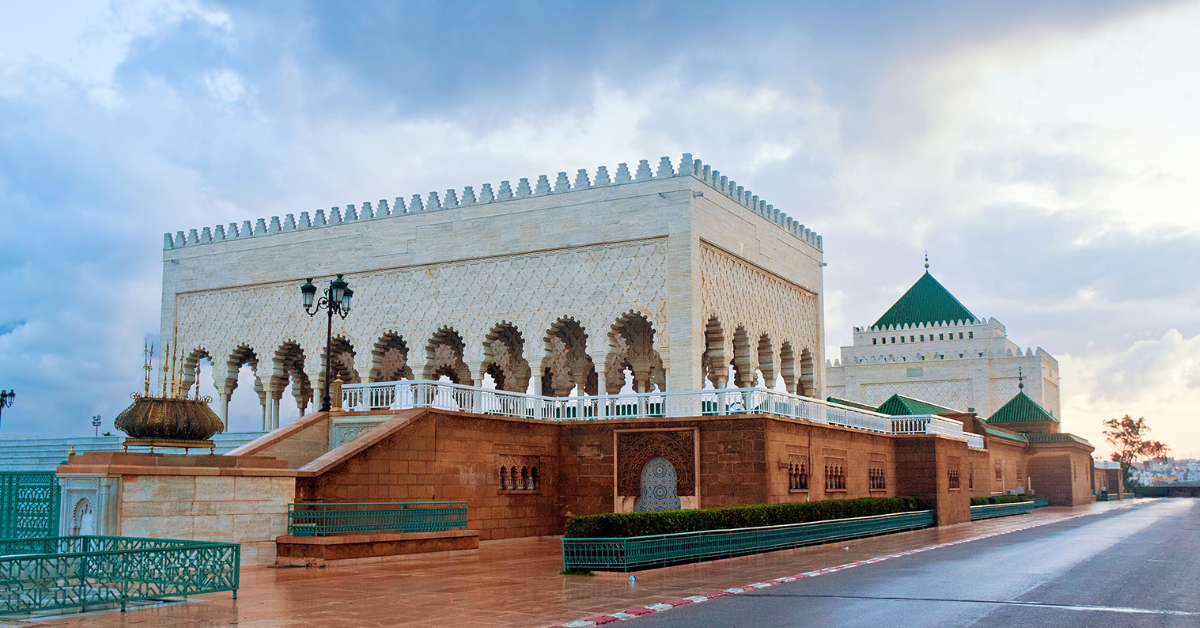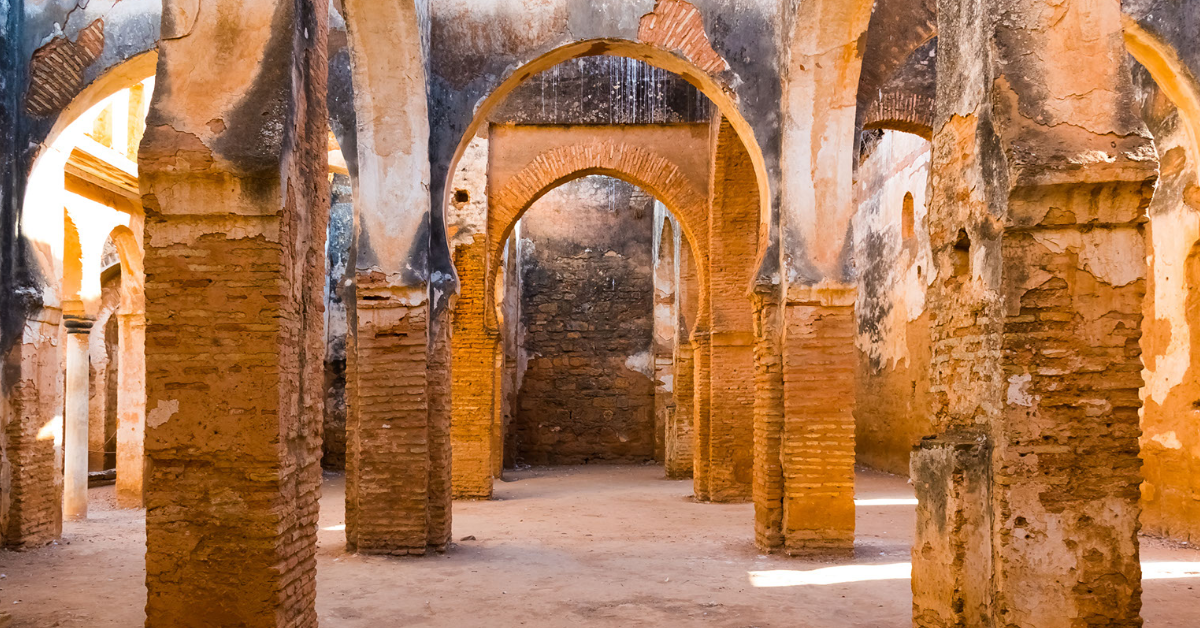Discover the Secrets of Morocco 15 Day Tour
Morocco is a destination of multitudinous and multidimensional experiences. It is a country that is developing into a modern landscape but holds its rich cultural heritage tightly within. From the deserts of the Sahara to the Mediterranean costs of Tangier, and from the urban areas of Casablanca to Africa’s Hollywood Ourzazate, Morocco is a country that enthralls millions of tourists every year.
Morocco’s blue hued narrow streets, medinas, colorful souks, and coastal beaches offer myriad experiences. You can walk down the alleys and explore ancient forts, and when you feel tired you can always stop by at a local café for some refreshing mint tea. During the evenings, you can enjoy colorful sights of the marketplace and take back some souvenirs as memories of your time spent in this country.
-
Departure
Casablanca -
Departure Time
Depends on Your Flight Time -
Return Time
Depends on Your Return Flight Time -
Dress Code
Casual -
Included
Camel trek (one camel per guest)Entrance FeesMeals as per itineraryNew air-conditioned vehicle 4WD or Minivan/Mini BusOvernight in Desert Luxury CampPick-up and Drop Off ServiceProfessional driver/Tour guide during the tour -
Not Included
FlightsLocal guides in major cities: Fes; Marrakech, Casablanca mosque, Volubilis; Essaouira, Atlas MountainsLunches and drinks unless specifiedPersonal expenses
Tour Plan
Day 1: Casablanca Arrival and Transfer to Rabat
After landing in Casablanca, the guided tour will take you to Hassan II Mosque, after which you will be transported to Rabat. The journey from Casablanca to Rabat will take 1.5 hours.
Get a guided tour of Morocco’s Imperial city Rabat and visit the Mausoleum of the erstwhile Sultan of Morocco Mohammed V. Follow it up with a visit to the Roman ruin called the Chellah, which is a short walk from the medina. You will have some time in the afternoon, during which we recommend visiting the trading port of Sale. It’s connected to Rabat by a bridge, and still has remnants of its 16th to 19th-century cultural heritage.
Day 2: Rabat to Tangier
After breakfast at your hotel, we will leave Rabat for Tangier through Assilah, an old Portuguese port that was for a long time a strategic port for Portuguese ships. Then, take a Guided Tour of the Port City of Tangier, situated on the border of the Mediterranean and the Atlantic ocean. In Tangier, we will explore the Hercules Caves, the Cap Spartel, and the old medina of Tangier.
Day 3: Tangier to Chefchaouen
The driver will pick you from the hotel and drive you to the blue city and the pearl of north, the city of Chefchaouen, you will enjoy the beautiful breathtaking landscapes of the Rif Mountains, before reaching the blue town. Once there, you will have a full time to explore the city at your own pace, strolling its picturesque blue alleys and enjoy a glass of Mint tea in a panoramic terrace.
Day 4: Chefchouane – Meknes – Volubilis – Fes
We will leave Chefchoaune and head towards Meknes, an imperial city that dated to the 17th century and founded by the sultan Moulay Ismail ( 1672- 1727) who set the capital of Morocco to Meknes and gave it its golden age by building his imperial palace, city walls, and kasbahs. Places of interest include the gate Bab El Mansour, Mausoleum of Moulay Ismail, the Imperial Palace, and the royal granaries and stables. After lunch on-site, we will continue our journey to reach shortly the Roman ruins of Volubilis with its old pillars, basilica, capitol, and forum, not far from Volubilis, we will visit the sacred village of Moulay Idriss. Moulay Idriss was Prophet Mohammed's great-grandson and he fled Mecca during the 8th century AD. He established himself at Volubilis, converted the locals to Islam, and founded the first Moroccan imperial dynasty.
Day 5: Exploring the old Medina of Fes
Full day dedicated to exploring the city of Fes, the first capital of Morocco, Meet the local guide and driver to start a new explorative day through the old Medina of Fes, discover all the charms of the most cultural of the first imperial cities of Morocco. One day is hardly enough to visit all the wonders of the most ancient of the imperial cities and world-famous for its leather and metalwork as well as the historical monuments including; Medersa Bouinania(Koranic school ), Bab Boujloud (blue gate), the leather tanneries, Najjarine Museum of Wooden Arts and Crafts. You might also want to just roam around some of its 9500 narrow alleys and just take in all the sounds, smells, sights, and spells! The afternoon will be free to explore places of interest that you couldn’t cover the previous day.
Day 6: Fes to Merzouga Desert
Leave for one of Moroccan Sahara’s two ergs, Erg Chebbi. The drive to these dunes is a long one, but there are several sights to see along the way. You will journey via the Garden City of Ifrane, and have a sumptuous lunch at Midelt. Post lunch, you will drive to Erfoud where you will be transferred to a 4X4 that will take you to the huge dunes of Merzouga to meet your camels and start a new adventure through the Erg Chebbi to enjoy a lifetime sunset and spend a night stay at the luxury desert camp (private tent with private bathroom ensuite).
Day 7: Merzouga desert – Todra gorges – Dades valley – Skoura – Ouarzazate
This morning will give you a chance to learn about the traditions and customs of the Berbers, who are indigenous to Morocco for centuries. The journey through the sand dunes will make you encounter the Todra and Dades Gorges. Continue through the rose valley to reach Ouarzazate where you will spend the night in Riad or Hotel.
Day 8: Ouarzazate - kasbah Ait ben haddou - Marrakech
After a delicious breakfast In Ouarzazate, (if time allows), we can visit the Atlas film studios where; Lawrence of Arabia and Gladiator were filmed. Leaving the main road we shortly arrive at the site of the most well-preserved and famous Kasbah in Morocco – Ait Benhaddou, another world heritage UNESCO site. The different houses (units) composing it communicate with each other giving way to intricate light patterns and mysterious passages and making for an ideal hide-and-seek playground. After the visit and lunch, we will follow the old road of caravans through the Ounila Valley to reach Telouet. The beauty of the valley underneath the route is beyond words. At Kasbah Telouet, which was once, the main residence of the ‘ Lord of the Atlas’ – Pacha El Glaoui used to accommodate his court, the stables, a Mosque, and countless slaves at a time when the Pacha was reportedly having tea with W. Churchill and started the first bus company in Morocco. A visit is recommended if only to marvel at the extravagance of this modern-day dynasty and the contrast between the derelict exterior and the opulent interior. The views along the route are simply enthralling and picturesque.
Afterward, you will drive through the scenic road through the High Atlas Mountains, and after innumerous twists crossing the Tichka pass (2260M high), we will reach Marrakech. Explore the economic center of Morocco, and enjoy mosques and palaces, enjoy a dinner and overnight in a charming Riad/ boutique hotelDay 9: Full day Marrakesh city tour
You will start a guided city tour of Marrakech, with your local guide and driver, the ‘Pearl of the South. Maybe due to its snake- -charmer, storyteller, and local music bands filled Djemaa El Fna square, the constant flow of show biz celebrities owning properties here, its massive foreign resident community, or its geographical location, Marrakech is much more famous than its counterpart Fes. One thing is sure: no other Moroccan city boasts such a demographic diversity: Arabs, Europeans, and Berbers have always blended with the Touareg populations north of the Sahara and the Black Africans whose ancestors worked at the court of the Sultan in a city always known for being a meeting point for caravans coming through its gates from the four corners of Africa.
Day 10: Exploring Marrakech: shopping or Relaxing in a SPA
Day 11: Day trip to Atlas Mountains from Marrakech
Day 12: Marrakech to Essaouira
Day 13: Exploring Essaouira
Day 14: Essaouira to Casablanca
Day 15: Return Flight
Create Your own Moroccan Adventure
At AFC Morocco Tours, we believe that travel should be as unique as you are. Whether it’s trekking in the High Atlas, discovering ancient ruins, or simply relaxing in the serene beauty of the Sahara, we invite you to customize your experience and make your Moroccan journey truly your own. Contact us today to add these enriching experiences to your tour!-
Stargazing in the Sahara
Experience the mesmerizing beauty of the night sky over the Sahara Desert. After a day of exploring the shifting dunes, gather around a traditional campfire, listen to local Berber music, and gaze upon the constellations in a sky untouched by city lights. An astronomer will guide you through the celestial wonders, enhancing your desert night with fascinating stories of the stars.
-
Explore the Majestic Gorges of Dades and Todra
Venture deeper into Morocco’s dramatic landscapes with a guided hike through the Dades and Todra Gorges. Walk alongside towering red rock walls, visit hidden villages, and learn about the unique geology of the region. You’ll be accompanied by local guides who will share the history and traditions of the Berber communities that call these gorges home.
-
Culinary Journey: Cooking with the Locals
Add a flavorful touch to your adventure with a hands-on cooking class in a traditional Moroccan home. Learn the secrets of Moroccan cuisine as you prepare an authentic tagine or couscous meal, using spices and fresh ingredients sourced from local markets. Share the meal with your hosts, gaining insight into the culinary heritage that is integral to Moroccan culture.
-
Atlas Mountains Village Stay
Take the road less traveled and spend a night in a remote Berber village nestled in the Atlas Mountains. Engage with the local community, participate in daily activities like weaving or baking bread, and witness a lifestyle that has changed little over the centuries. This experience offers a glimpse into Morocco’s rich cultural tapestry and its deep-rooted traditions.
-
Visit a Women's Cooperative
Support sustainable tourism by visiting a women’s argan oil cooperative. Learn about the process of extracting oil from the argan nut and the important role these cooperatives play in empowering local women. Not only will you have the opportunity to purchase high-quality products directly from the source, but you’ll also contribute to the preservation of this ancient craft.
-
Sunset Camel Ride and Desert Camping
For the ultimate desert experience, embark on a sunset camel ride across the sweeping dunes of Erg Chebbi. Feel the magic of the golden hour as you ride to a secluded desert camp. Enjoy a night under the stars, complete with traditional music, stories, and an exquisite Moroccan dinner.
-
Hammam and Spa Experience
Relax and rejuvenate after your adventures with a traditional Moroccan hammam experience. Indulge in a luxurious steam bath, followed by an exfoliating scrub using black soap and an argan oil massage. This ancient ritual is the perfect way to unwind and revitalize both body and mind.
20 Things You Must Know Before Visiting Morocco Travel Tips
More and more people are visiting Morocco every year. It’s a beautiful country. If you plan on going, here are a few pointers to help you prepare for your trip.- Dress Appropriately
- Currency and Cost
- ATMs.
- Keep Correct Change with You
- Tipping
- Be Wary of Local Guides.
- Stay Away from Strangers Offering Free Tours or Directions.
- Fridays are Holy Days and Prepare for Holidays
- Careful What Water You Use
- Pack Some Immodium
- Watch Your Pockets
- What Language Do They Speak?
- Hello(Peace Be With You): Salam Alikome (salaam a eleikum)
- Thank You:Choukran (shokran)
- No Thank You: La Choukran (la shokran). This one is useful when you have a bunch of street vendors hassling you to buy something.
- Watch Out: Although you won’t use this yourself, you’ll most likely hear this in the medinas or souks (outdoor markets). It will be said by locals coming by with a mule, motorcycle, or cart and is a warning to move to the side.
- Visiting Mosques:
- Do I Need a Visa or Vaccines?
- Ask Before Taking Photos (And You May Have to Pay).
- Souvenirs to Bring Home:
****************************
Overall, Morocco is a beautiful country, and you will be happy to experience it. As long as you’re completely aware of your surroundings, and you go in with the right mindset and expectations, you can have a wonderful experience.
